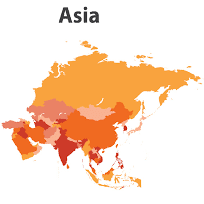Fidelity Asian Values (LON:FAS) is the topic of conversation when Hardman and Co’s Analyst Mark Thomas caught up with DirectorsTalk for an exclusive interview.
Q1: You called your recent report on Fidelity Asian Values ‘FAV: questions for the 2022 AGM on 23 November’. What can you tell us about it?
A1: In this note, we asked the questions we would ask the FAV board at the forthcoming AGM, on 23 November 2022. To offer a perspective, we also gave the answers that we would give if we were asked the same questions.
We believe they fall into three key areas, and we asked i) why has the trust outperformed over the long term, ii) what are the short-term prospects, especially bearing in mind the market’s appetite for small-cap, value companies in Asia, the trust’s exposure to Chinese and financial businesses, and sentiment risks, and iii) how the trust is managed in terms of its discount/buyback, the large dividend increase, and its conservative approach to gearing.
Q2: So, taking the first question first, what drives their long-term outperformance?
A2: There has been outperformance against both UK and local benchmarks, and it really has two elements. First, it is because Asia is an attractive market to be in, and, secondly, because of the value added by the trust and the manager.
We explored the macro appeal of Asia in great detail in a recent note, Asia: more appealing than ever, published on 5 July 2022, and the region’s superior economic growth prospects were reconfirmed in the October IMF World Economic Outlook. This is combined with regulatory, socio-demographic and valuation support. Fidelity Asia leverages regional opportunities with stock selection – all about using detailed research to pick good companies at fair prices, and, when we wrote the report, the trust’s companies’ RoE was 35% above the market, but its P/E was 25% lower.
Q3: Your second theme, the short-term prospects, what can you tell us about them?
A3: Half of NAV is in companies with market caps of under £1bn – so market appetite for small caps can be important. This was a headwind for much of 2016-21, as market appetite was for large-cap, growth companies – but Fidelity Asia Values still outperformed.
One short-term theme we have identified is that, more recently, appetite has turned in FAV’s favour, and this could now be a following wind. The manager sees it as the start of a trend, given the relative valuation, while we see significant opportunities in that space.
A second theme is that, while Chinese growth may be slower than in the past, it is still expected by the IMF to be ca.4x that of advanced economies in 2023, and that’s before any further stimulus packages. The manager comments that, even in the property sector, detailed analysis can identify mis-priced opportunities. The volatility, both up and down, around regulation and state intervention, has been very evident in recent weeks.
A third theme we look at is some sector exposures; we note, in particular, that three of the biggest holdings were banks, and financials were the biggest sector overweight in uncertain times. It is worth remembering that Fidelity Asia is all about stock selection, not sector allocation – so sector exposures drop out from stock-picking. Financial investments have strong balance sheets, structural growth opportunities and good managements, and the key ones are in India, where GDP growth is expected to be more than 6% in both 2022 and 2023.
Q4: And the management of the trust?
A4: We noted the active returns to shareholders with a buyback programme that has seen nearly 2% of shares bought back in the past 15 months. The dividend was increased 59% in 2022, reflecting a sharp increase in investment income, and the current yield on the portfolio should generate a similar level of investment income as last year. Gearing has remained modest through the life of the current manager.
Q5: What does about the risks?
Sentiment risk is always an issue, and the manager highlights the “unknown unknowns”.
Fidelity Asian Values’ performance is driven by stock selection, and that should never be overlooked. It is not a complicated story. It invests in good businesses, not stocks, but businesses. It backs people in whose competency and honesty it trusts and buys at prices with a margin of safety. It does this again and again, and it doesn’t get carried away and doesn’t go to extremes, it just repeats the same behaviour, again and again.
It sounds quite boring, but by maintaining this discipline, with the Fidelity analyst team generating great investment ideas, and with the through-cycle support of the board, they have delivered long-term outperformance. What we have done in this note is highlight that this approach is being undertaken in very appealing markets that give favourable tailwinds, a potential double whammy, if you like.


